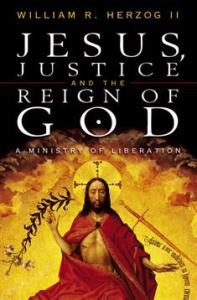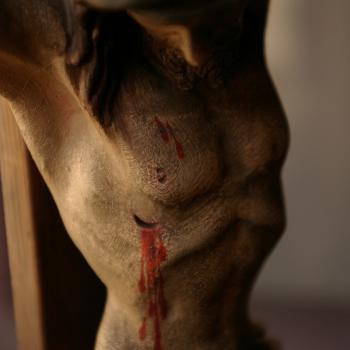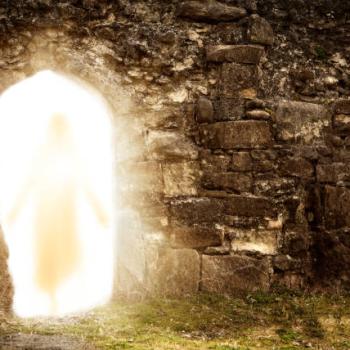
William T. Herzog’s book Parables as Subversive Speech uses historical-critical methods to unveil a “historical Jesus” behind the texts of the Gospels. He analyzes the parables as Jesus probably spoke them in the political, economic, and religious context of his world. That work lent plausibility to his beginning hypothesis, which described Jesus as “pedagogue of the poor.”
In concluding a series of posts on that book (here), I referred to a common criticism. Herzog strengthens our perception of a Jesus who fits realistically in his first-century Palestinian environment, but that’s not enough. We seem to lose the transcendent dimension, the Jesus for all ages. Jesus becomes a believable advocate for justice in his time, but for Christians the theological element is uppermost. That element is obscured or lost, the critics say.
In a second book, Jesus Justice, and the Reign of God: a Ministry of Liberation, Herzog acknowledges the criticism. Admitting that the theological dimension was “not evident” in that earlier work, he “intends to address that inadequacy.” (p. 47) The later work looks beyond the parables to the actions as well as the words of the historical Jesus. Here Herzog sees Jesus as “prophet of the justice of the reign of God” (the title of Chapter 3).
This book will be the focus of forthcoming posts. I will start with Herzog’s exceptionally clear exposition of the methods that Bible scholars use to glimpse the Jesus of history. That’s in Parts One and Two of Jesus, Justice, and the Reign of God. A biography of Jesus is impossible, but enough shines through the Gospels to show us what Jesus was all about.
The historical Jesus and the Reign of God
The heart of Herzog’s book is in Parts Three and Four. Here Herzog gives content to his description of Jesus as prophet of the justice of the Reign of God.
In Part Three Herzog examines:
- Jesus’ conflict-laden relationship with the Temple (Chapter Six),
- His objection to the use of the Torah and its purity code by the rich to control the poor, (Chapter Seven),
- Jesus’ healing ministry and the debates and opposition it occasioned (Chapter Eight),
- The freeing of God’s blessing on the land and the poor from control by Temple officials (Chapter Nine).
In Part Four Herzog explores what he calls the “show trial” of Jesus. Not an attempt to get at the truth, it was an exercise in degrading the Victim and discrediting his movement. Yet some of the charges against Jesus were true. Jesus did threaten – or predict – the destruction of the Temple. He at least questioned the payment of tribute to Caesar. Besides that, he regularly upset religious officials with actions they thought they owned. Jesus did not claim to be a messianic king, but his actions and words bespoke a new economic and political order. Roman and Jewish officialdom had reasons to fear him.
Jesus ministry led to his execution, and it was that way of life that God approved by raising him from the dead. Because of that approval, Herzog says,
[T]he historical Jesus has no less relevance for the life of faith than the Risen Christ. (p. 250)
In earlier posts I called Jesus an activist for social justice, a designation that Herzog’s work helps to clarify. This second book, coming posts will attest, also shows why the Church can call social justice a “constitutive element of the Gospel.”
Image credit: Westminster John Knox Press












